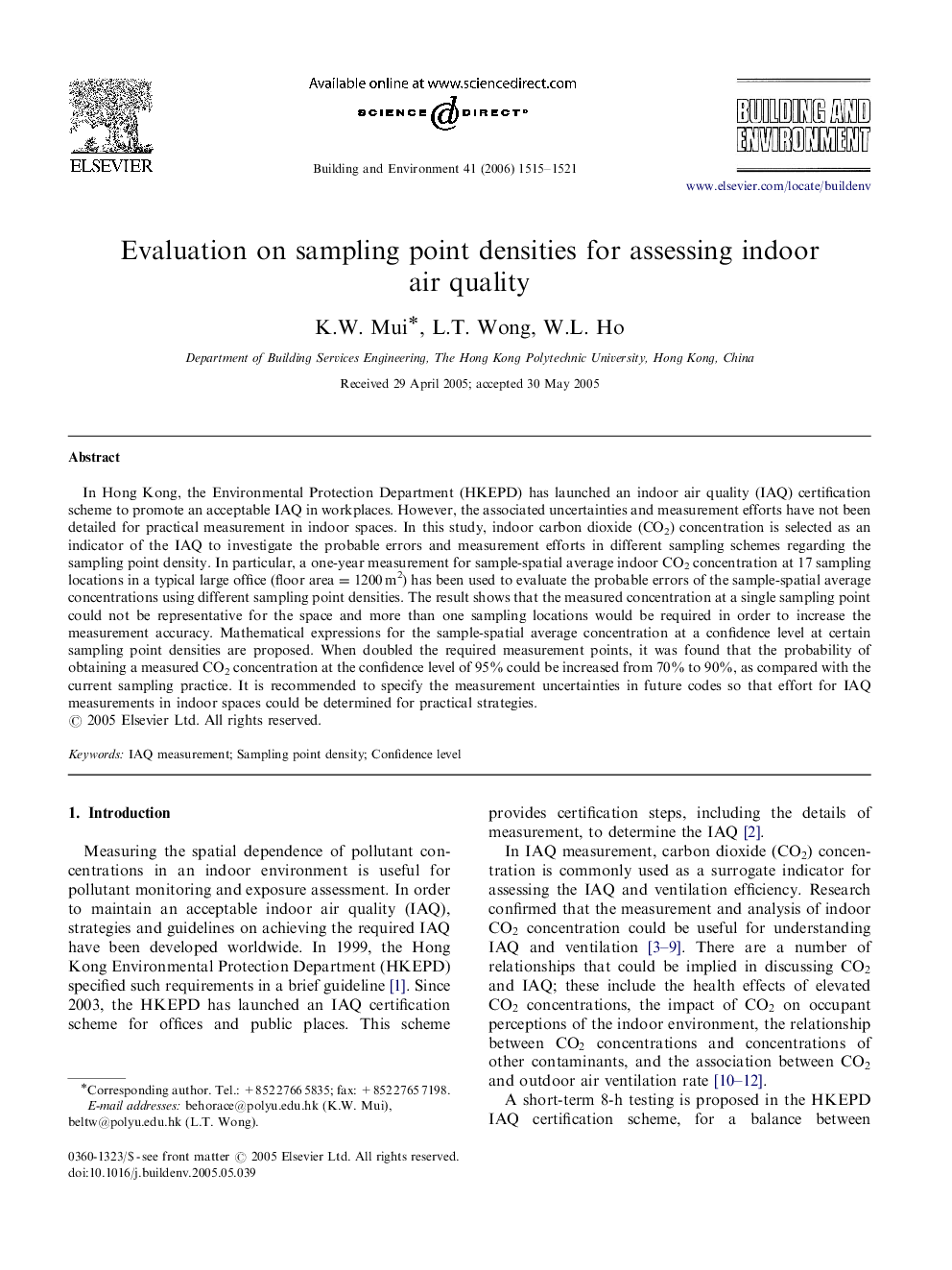| Article ID | Journal | Published Year | Pages | File Type |
|---|---|---|---|---|
| 250161 | Building and Environment | 2006 | 7 Pages |
In Hong Kong, the Environmental Protection Department (HKEPD) has launched an indoor air quality (IAQ) certification scheme to promote an acceptable IAQ in workplaces. However, the associated uncertainties and measurement efforts have not been detailed for practical measurement in indoor spaces. In this study, indoor carbon dioxide (CO2) concentration is selected as an indicator of the IAQ to investigate the probable errors and measurement efforts in different sampling schemes regarding the sampling point density. In particular, a one-year measurement for sample-spatial average indoor CO2 concentration at 17 sampling locations in a typical large office (floor area=1200 m2) has been used to evaluate the probable errors of the sample-spatial average concentrations using different sampling point densities. The result shows that the measured concentration at a single sampling point could not be representative for the space and more than one sampling locations would be required in order to increase the measurement accuracy. Mathematical expressions for the sample-spatial average concentration at a confidence level at certain sampling point densities are proposed. When doubled the required measurement points, it was found that the probability of obtaining a measured CO2 concentration at the confidence level of 95% could be increased from 70% to 90%, as compared with the current sampling practice. It is recommended to specify the measurement uncertainties in future codes so that effort for IAQ measurements in indoor spaces could be determined for practical strategies.
